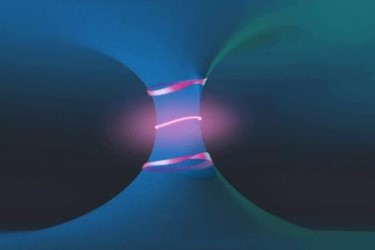Unique Topological Phenomena In An Open System Of Photonic Crystals
By Jof Enriquez,
Follow me on Twitter @jofenriq

Scientists at Massachusetts Institute of Technology (MIT) have observed two distinct topological effects in an open system of photonic crystals. Such phenomena open new possibilities in making novel light-based computing systems or light-emitting devices.
The 2016 Nobel Prize-winning field of topological effects is being explored by scientists in order to understand certain quantum behaviors and discover exotic forms of matter. Most research has concentrated on topological phenomena in closed physical systems, which are easier to control and observe. Researchers, however, know that more complex topological ideas exist in the more general open — also termed as non-Hermitian — systems, where real-world technological applications are expected to be derived.
Now, MIT scientists and collaborators report having observed two topological effects unique to an open system of photonic crystals — photonic structures with nano-sized geometrical features useful to study exotic interactions between light and matter.
The first observation is the formation of a Fermi arc, which previously has been observed in closed systems, but only on the two-dimensional surface of a three-dimensional system. In this newer study, MIT researchers found a Fermi arc not on the surface, but residing in the bulk of the system, and which connects two exceptional points found only in open frameworks.
The second effect is the emergence of fields of light that form half-twisting contours as they go around the crystal. The effect is comparable to Mobius strips, a type of non-trivial topology being explored for future photonic systems.
“As you go around this crystal, the polarization of the light actually flips,” says MIT graduate and researcher Hengyun “Harry” Zhou.
Like researchers before them, the MIT scientists were challenged in accessing open systems to explore richer topological features, but built off earlier research where they developed a method to use light scattered from a photonic crystal to produce direct images that reveal the energy contours of the material, rather than having to calculate those contours indirectly.
“Perhaps the most ingenious aspect of this work is that the authors use the fact that their system must necessarily lose photons, which is usually an obstacle and annoyance, to access new topological physics,” says Mikael Rechtsman, an assistant professor of physics at Pennsylvania State University who was not involved in this work, according to the press release. “Without the loss … this would have required highly complex 3-D fabrication methods that likely would not have been possible.”
In other words, Rechtsman says, the technique the researchhers developed “gave them access to 2-D physics that would have been conventionally thought impossible.”
In the journal Science, the authors write, "Our work connects the fields of topological photonics, non-Hermitian physics and singular optics, providing a framework to explore more complex non-Hermitian topological systems," which ultimately could lead to the development of new kinds of lasers, or light-emitting devices.
